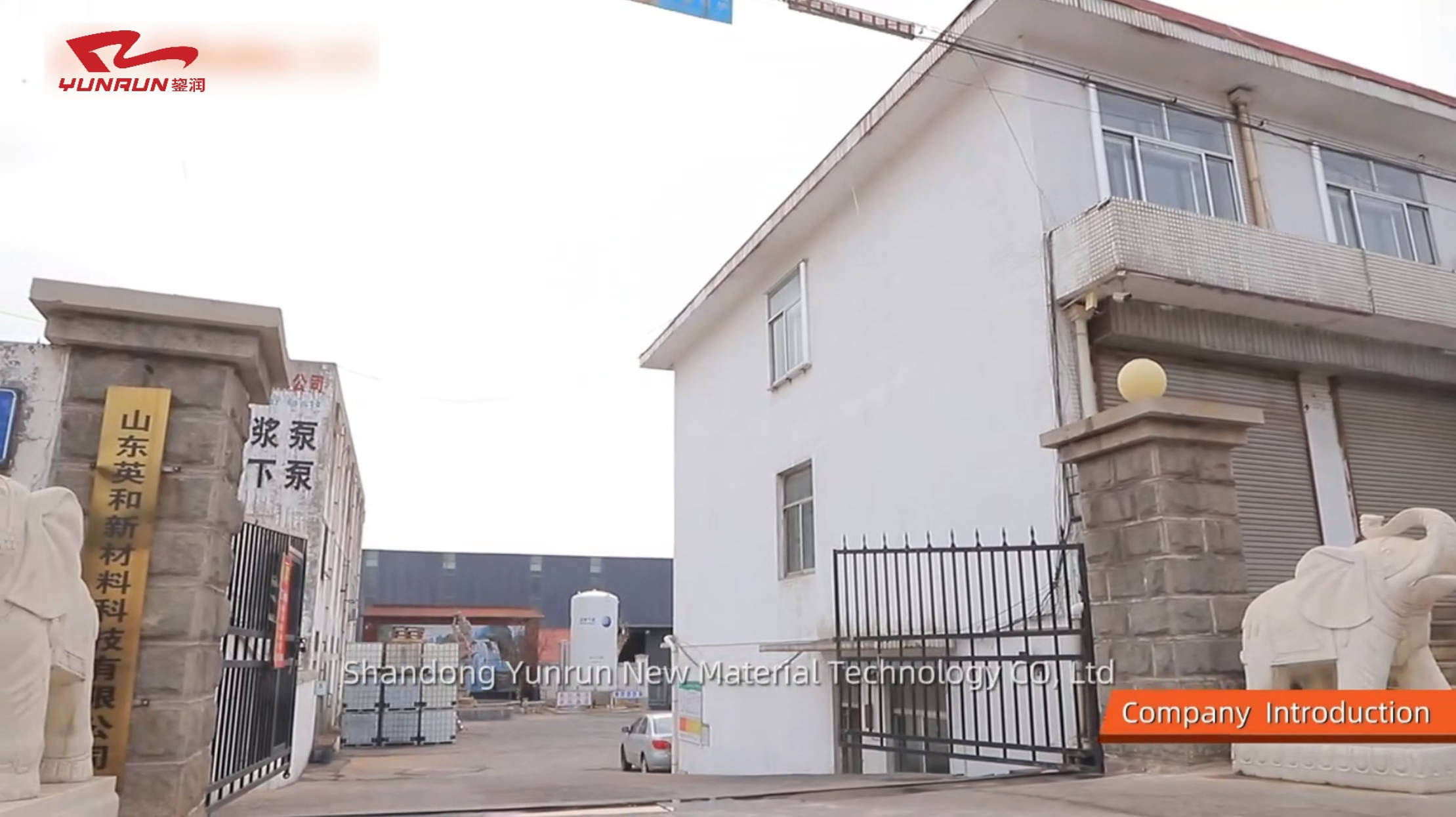The Comprehensive Advantages of Utilizing Polyurethane Sealant from a 5 Gallon Bucket
The Comprehensive Advantages of Utilizing Polyurethane Sealant from a 5 Gallon Bucket
Table of Contents
Introduction to Polyurethane Sealant
Why Choose a 5 Gallon Bucket?
Cost-Effectiveness of Bulk Purchasing
Convenience and Storage Benefits
Key Benefits of Polyurethane Sealant
Exceptional Adhesion Properties
Weather Resistance
Jul 09,2025
The Comprehensive Advantages of Utilizing Polyurethane Sealant from a 5 Gallon Bucket
Table of Contents
- Introduction to Polyurethane Sealant
- Why Choose a 5 Gallon Bucket?
- Key Benefits of Polyurethane Sealant
- Exceptional Adhesion Properties
- Weather Resistance and Durability
- Flexibility and Movement Accommodation
- Chemical Resistance
- Applications of Polyurethane Sealant
- Application Techniques for Optimal Results
- Safety Considerations When Using Sealants
- Frequently Asked Questions
- Conclusion
Introduction to Polyurethane Sealant
Polyurethane sealant is a versatile and robust material primarily used for sealing and bonding applications. Its chemical composition allows it to form a strong, flexible bond that withstands various environmental conditions. When packaged in a 5-gallon bucket, this sealant becomes an even more valuable resource for contractors and DIY enthusiasts alike.
Why Choose a 5 Gallon Bucket?
Selecting a 5-gallon bucket for your polyurethane sealant offers several distinct advantages over smaller containers.
Cost-Effectiveness of Bulk Purchasing
Purchasing polyurethane sealant in bulk significantly reduces the cost per unit. This is particularly beneficial for large projects where multiple containers of sealant would otherwise be required. By opting for a 5-gallon bucket, users can manage their budgets more effectively while ensuring they have ample supply for extensive applications.
Convenience and Storage Benefits
A 5-gallon bucket is not only economical but also convenient. It provides a larger volume, which means fewer trips to the store and less downtime during projects. Additionally, these buckets are designed for easy stacking and storage, making them a practical choice for workshops and job sites.
Key Benefits of Polyurethane Sealant
Polyurethane sealants are renowned for their myriad benefits, which cater to a wide range of applications.
Exceptional Adhesion Properties
One of the standout features of polyurethane sealant is its exceptional adhesion capabilities. It bonds effectively to various substrates, including wood, metal, concrete, and plastic. This versatility makes it an indispensable tool for different construction and repair tasks.
Weather Resistance and Durability
Polyurethane sealants are designed to withstand the elements. They resist UV rays, moisture, and extreme temperatures, ensuring that the bond remains intact over time. This durability is crucial for applications exposed to harsh weather conditions, such as outdoor construction or marine environments.
Flexibility and Movement Accommodation
Unlike some rigid sealants, polyurethane remains flexible after curing. This flexibility allows it to accommodate movement in structures, such as expansion and contraction due to temperature changes. This feature helps prevent cracking and ensures a long-lasting seal.
Chemical Resistance
Polyurethane sealants exhibit excellent resistance to various chemicals, oils, and solvents. This property makes them suitable for industrial applications where exposure to harsh substances is common. Whether it’s in a factory setting or an automotive context, polyurethane sealants help maintain integrity and longevity.
Applications of Polyurethane Sealant
The application of polyurethane sealant spans multiple industries and contexts.
Construction and Building Projects
In the construction industry, polyurethane sealants are often used for sealing joints, gaps, and seams in buildings. They are ideal for use around windows, doors, and roofing systems, providing both weatherproofing and structural integrity.
Automotive Applications
In automotive contexts, polyurethane sealants are utilized for bonding windshields and other components, creating a water-tight seal that enhances vehicle safety and performance. Their flexibility and durability make them perfect for the dynamic environments these parts endure.
Marine Uses
Marine applications benefit significantly from polyurethane sealants. They are used to seal boats and other vessels, ensuring that they remain watertight even under the most demanding conditions. The resistance to saltwater and UV rays is particularly beneficial for marine environments.
Application Techniques for Optimal Results
To ensure the best performance from polyurethane sealant, proper application techniques are essential.
- **Surface Preparation:** Ensure that surfaces are clean, dry, and free from contaminants. This maximizes adhesion.
- **Temperature Consideration:** Apply sealant at temperatures recommended by the manufacturer to achieve optimal curing and adhesion.
- **Even Application:** Use a caulking gun or applicator to apply the sealant evenly. This helps in creating a consistent and functional seal.
- **Curing Time:** Allow adequate curing time as specified by the product instructions. This is critical for achieving the desired strength and flexibility.
Safety Considerations When Using Sealants
While polyurethane sealants are beneficial, it's vital to understand the safety measures associated with their use.
- **Personal Protective Equipment (PPE):** Wear gloves, goggles, and masks when handling sealants to avoid direct contact with skin and inhalation of fumes.
- **Ventilation:** Ensure adequate ventilation in the workspace to minimize exposure to potentially harmful vapors.
- **Storage Guidelines:** Store sealants in a cool, dry place, away from direct sunlight and heat sources to maintain their integrity and effectiveness.
Frequently Asked Questions
1. What is polyurethane sealant primarily used for?
Polyurethane sealant is used for bonding and sealing applications in construction, automotive, and marine industries, thanks to its excellent adhesion and weather resistance.
2. How does polyurethane compare to silicone sealants?
While both are effective, polyurethane sealants offer superior adhesion and durability, especially in applications requiring flexibility and chemical resistance.
3. Can I paint over polyurethane sealant?
Yes, polyurethane sealants can be painted over once fully cured. However, it's essential to check the manufacturer's recommendations for compatibility with specific paints.
4. How long does polyurethane sealant take to cure?
Curing times can vary based on temperature and humidity but generally take 24 hours for a firm bond and up to several days for full curing.
5. Is polyurethane sealant safe for indoor use?
Yes, polyurethane sealant is safe for indoor use; however, ensure proper ventilation during application to minimize exposure to fumes.
Conclusion
Utilizing polyurethane sealant from a 5-gallon bucket provides a multitude of benefits, ranging from cost-effectiveness to exceptional performance in diverse applications. Its unique properties, such as flexibility, durability, and chemical resistance, make it an ideal choice for both professional and DIY projects. By understanding the advantages and application techniques associated with this versatile sealant, users can ensure optimal results. Embrace the reliability of polyurethane sealant in your next project and experience the difference it can make for your sealing and bonding needs.
PREVIOUS:
Others




